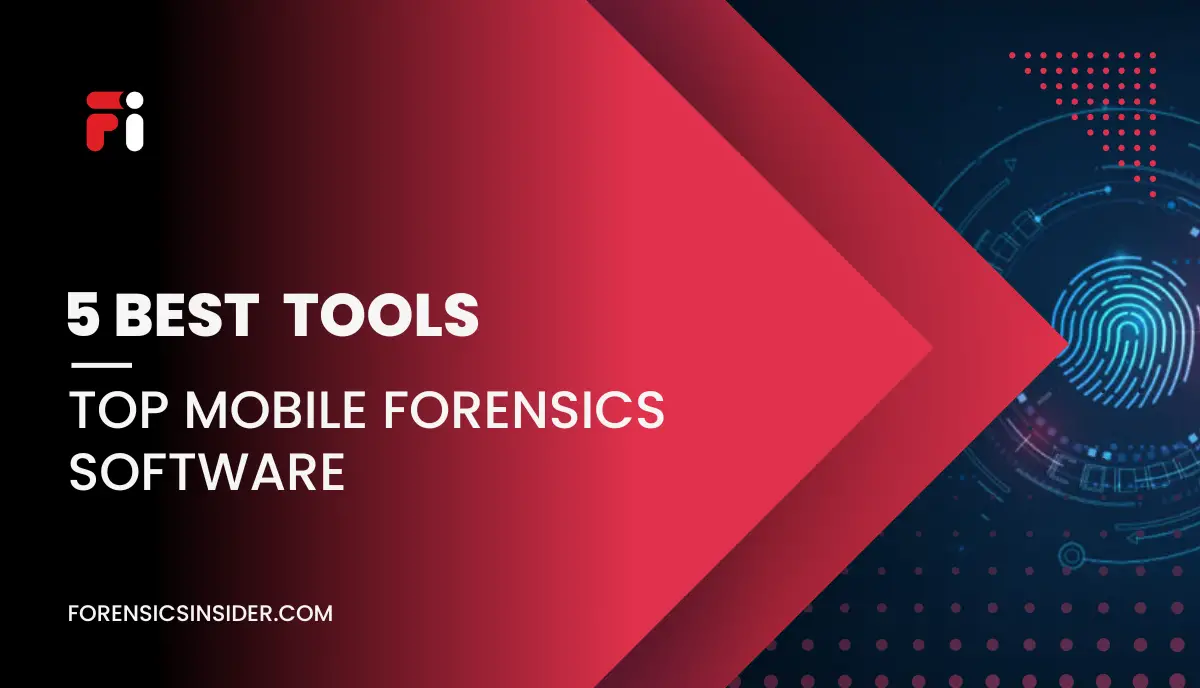In today’s digital age, mobile devices have become a goldmine of information for investigators, cybersecurity experts, and data recovery specialists. Mobile device forensic tools play a crucial role in extracting and analyzing digital evidence from smartphones and tablets, enabling professionals to uncover valuable insights. In this article, we will explore the top 5 mobile forensics tools that empower investigators in their quest for justice and knowledge.
What are Mobile Device Forensic Tools?
Mobile device forensic tools are specialized software designed to extract and analyze digital evidence from mobile devices. These tools are essential for criminal investigations, cybersecurity analysis, and data recovery efforts. By leveraging advanced techniques, they allow investigators to recover deleted data, access encrypted files, analyze communication patterns, and reconstruct timelines of events. Mobile device forensic tools are indispensable in today’s digital investigations, ensuring that no stone is left unturned.
What are the Main Categories of Mobile Forensics?
Mobile forensics can be categorized into four main areas, each focusing on a different aspect of the investigation process:
Logical Forensics
Logical forensics involves acquiring data from mobile devices through non-invasive methods. It includes extracting information such as call logs, contacts, messages, and application data. Mobile forensics tools use USB connections or wireless communication protocols to access and collect data from devices without altering the original content.
Physical Forensics
Physical forensics involves creating a bit-by-bit copy of a mobile device’s storage media, including both allocated and unallocated space. This category enables investigators to conduct in-depth analysis, recover deleted files, and access encrypted data. It requires specialized hardware and software to acquire a complete image of the device’s storage.
File System Forensics
File system forensics focuses on the examination of file systems within mobile devices. By analyzing file metadata, directory structures, and file fragments, investigators can retrieve deleted or hidden data. This category is particularly useful when investigating file-based attacks or recovering files that have been deliberately concealed or deleted by the device user.
Network Forensics
Network forensics involves the analysis of network traffic and communication data from mobile devices. It includes examining call records, text messages, internet browsing history, social media activity, and other network-related information. Network forensics enables investigators to understand the communication patterns and interactions between devices and networks.
The Best Mobile Forensics Tools!
Let’s explore the top 5 mobile forensics tools that offer powerful features and functionalities:
1. Cellebrite UFED
Cellebrite UFED is a comprehensive mobile forensic tool widely recognized for its versatility and reliability. It supports an extensive range of mobile devices and operating systems. With UFED, investigators can perform logical and physical extractions, recover deleted data, decrypt passwords, and analyze acquired data using advanced search and reporting capabilities. Cellebrite UFED is trusted by law enforcement agencies and forensic professionals worldwide.
2. Oxygen Forensics
Oxygen Forensics provides a complete mobile forensic solution with advanced data recovery and analysis capabilities. It offers comprehensive device support, including Android and iOS smartphones and tablets. Oxygen Forensics excels in data carving, password recovery, cloud extraction, and timeline analysis. The tool’s user-friendly interface and powerful reporting features make it a popular choice among forensic investigators.
3. MSAB XRY
MSAB XRY is renown for its expertise in handling complex mobile forensic cases. It supports various mobile device types, including feature phones and smartphones. XRY offers advanced decoding capabilities, allowing investigators to access encrypted and password-protected data. The tool provides comprehensive reporting and analysis features, enabling in-depth examination of extracted data.
4. Hancom MD-NEXT
Hancom MD-NEXT is a mobile forensic tool that offers a wide range of analysis functions. It provides integrated analysis tools for both logical and physical extractions. Hancom MD-NEXT supports multiple mobile operating systems, including Android and iOS. The tool’s robust data recovery options and compatibility with diverse devices make it a valuable asset in mobile forensic investigations.
5. MOBILedit Forensic
MOBILedit Forensic is a versatile mobile forensic solution that enables investigators to extract data from various mobile devices. It supports both logical and physical extractions, recovering deleted data, and extracting data from locked or damaged devices. MOBILedit Forensic offers powerful analysis features, including keyword searching and timeline analysis, making it an effective tool for mobile device investigations.
What are Mobile Forensic Techniques?
Mobile forensic investigations involve several techniques, including:
Data Extraction:
Extracting data from mobile devices using logical or physical methods.
Data Recovery:
Recovering deleted or hidden data from the device’s storage.
Decoding and Decryption:
Decrypting encrypted data and decoding proprietary file formats.
Timeline Analysis:
Reconstructing a chronological order of events based on timestamps and metadata.
Keyword Searching:
Searching for specific keywords or patterns within extracted data.
Which Tool is Widely Used for Mobile Forensic?
Among the discussed mobile forensic tools, Cellebrite UFED is widely recognize and extensively use in the field of mobile forensics. Its robust capabilities, extensive device support, and trusted reputation make it a top choice for many investigators and forensic professionals.
Conclusion
Mobile forensics tools are indispensable in the world of digital investigations. The five tools discussed in this article, Cellebrite UFED, Oxygen Forensics, MSAB XRY, Hancom MD-NEXT, and MOBILedit Forensic, offer powerful features and capabilities for extracting and analyzing digital evidence from mobile devices. By leveraging these tools, investigators can unlock valuable insights and uncover the truth hidden within mobile devices, ultimately contributing to justice and cybersecurity in our digital world.




